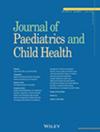Risk Factors for Severe Bronchiolitis in Australian and Aotearoa New Zealand Infants: A Systematic Review
Abstract
Aim
Bronchiolitis is the leading cause of hospital admission in Australasian infants. Infants with risk factors for severe disease may have a greater likelihood of prolonged hospitalisation and intensive care admission. This study aimed to synthesise the literature on risk factors for severe bronchiolitis in Australasian infants.
Methods
Systematic review including observational studies of risk factors for severe bronchiolitis in Australasian infants (< 12 months), published from 2000. Databases were searched (24 January 2024): MEDLINE, EMBASE, PubMed, Cochrane Library and CINAHL. Risk of bias (RoB) was assessed using the Newcastle–Ottawa Scale for cohort studies, and evidence quality was evaluated using GRADE. Results were narratively synthesised.
Results
Ten out of 26 467 articles were included (N = 895 276; 12 cohorts, prospective = 5, retrospective = 7). Studies were mostly rated low RoB. There was evidence for the following risk factors: younger chronological age, prematurity, plural birth, comorbidity (chronic lung disease, congenital heart disease, chronic neurological disease, any genetic disorder, any comorbidity), Indigenous ethnicity, economic disadvantage, tobacco smoke exposure and timing of illness onset at presentation. Most risk factors had moderate-quality evidence (range high to very low). Evidence was lacking for the following risk factors present in international literature: breastfeeding exposure and faltering growth. The following risk factors have not been reported in Australasian infants: trisomy-21, congenital diaphragmatic hernia and environmental pollutants.
Conclusions
Risk factors for severe bronchiolitis in Australasian infants are largely consistent with the international literature, although evidence is lacking for some. Knowledge of these risk factors is highly relevant to those assessing infants with bronchiolitis, and in guiding targeted delivery of respiratory syncytial virus immunisation and other preventative programmes.
Trial Registration
PROSPERO (CRD42023463917)


 求助内容:
求助内容: 应助结果提醒方式:
应助结果提醒方式:


